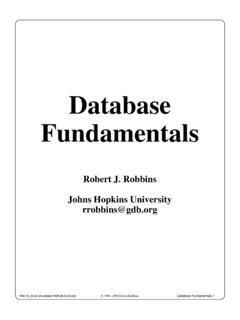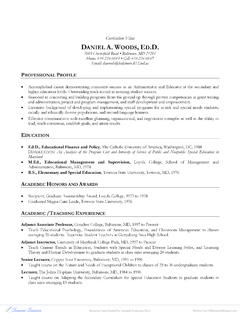Transcription of VICARIOUS TRAUMATIZATION B Hudnall Stamm , …
1 VICARIOUS TRAUMATIZATION B Hudnall Stamm1, E. M. Varra2, L. A. Pearlman3 & E. Giller4 BACKGROUND People who work in helping professions are called to respond to individual, community, national, and even international crises. Health care professionals, social service workers, teachers, attorneys, police officers, firefighters, clergy, airline and other transportation staff, disaster site clean-up crews, and others who offer assistance at the time of the event or later, may be negatively affected by their contact with these events. Helpers are exposed to both primary ( , direct) and VICARIOUS sources of traumatic stress. Helpers may feel a positive effect associated with their ability to help. They may also feel negative, secondary effects, called VICARIOUS trauma (VT). VICARIOUS trauma can be caused by repeatedly hearing horrible stories about extremely stressful events. WHAT DO WE KNOW? We do not know how common it is for helpers to suffer negative effects from their helping roles.
2 However, we do know that reports of VT are widespread. According to national scientific studies, about 50% of women and 60% of men in the United States are exposed to a potentially traumatizing event. Beyond those responders on the front-lines, many helpers provide assistance long after the event. For example, about one fifth of them will seek professional mental health assistance. Over the past fifteen years research has shown that while many helpers are pleased they can help people who experience extremely stressful events, secondary exposure to traumatic stress can have a negative impact on helpers. These effects can be similar to those suffered by the primary victim of the event, and may include intrusive images, nightmares, emotional numbing, dissociative experiences, and exaggerated startle response. They also may include changes in how the individual experiences him/herself and others, such as changes in feelings of safety, increased cynicism, and disconnection from loved ones.
3 There is research evidence that secondary exposure can lead to depression in some helpers. VT may lead to increased use of alcohol or drugs. In the workplace, VT has been associated with higher rates of physical illness, greater use of sick leave, higher turnover, lower morale, and lower productivity that may lead to patient care errors. VT may be exacerbated by feelings of professional isolation, large caseloads, and frequent contact with traumatized people and visits to trauma environments or locations ( , ground zero for an event). It may be aggravated by the severity of the traumatic material to which the helper is exposed, such as direct contact with victims, or exposure to graphic accounts, stories, photos, and things associated with extremely stressful events. Some workplace models exist that may be used as a basis for developing prevention and interventions programs for helpers at risk for VT. WHAT CAN WE DO? Experience has shown that a systemic prevention program can maintain helpers well-being and decrease individual and organizational losses like turnover and burnout.
4 A top priority is educating emergency responders and those who assist with the long-term responses about VT and other trauma issues. It is important to destigmatize secondary trauma through organizational recognition and acknowledgement. Organizations can establish policies that are consistent with current knowledge of risk and prevention of secondary/ VICARIOUS TRAUMATIZATION . Support resources, including peer consultation and support, are useful for those involved in helping. Professional consultation, training, and counseling for VT and other secondary effects are vital for those helpers in need. FOR ADDITIONAL INFORMATION 4 Sidran Institute Traumatic Stress Education and Advocacy 200 E. Joppa Road, Suite 207 Towson, MD 21286 USA Phone: 410-825-8888, Fax: 410-337-0747 ; 3 Traumatic Stress Institute/Center for Adult & Adolescent Psychotherapy, LLC and Trauma Research, Education, & Training Institute, Inc. 22 Morgan Farms Drive, South Windsor, CT 06074 USA Phone ; 1 Institute of Rural Health Campus Box 8174, Idaho State University Pocatello, ID 83209 Phone ~bhstamm and 2 University Counseling Center and Department of Psychology University of Nevada, Reno






